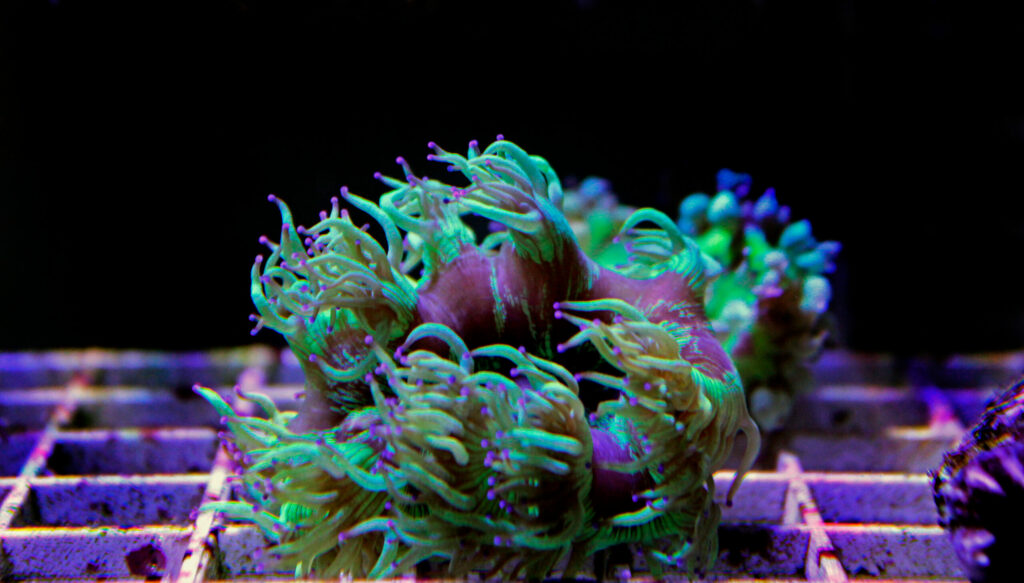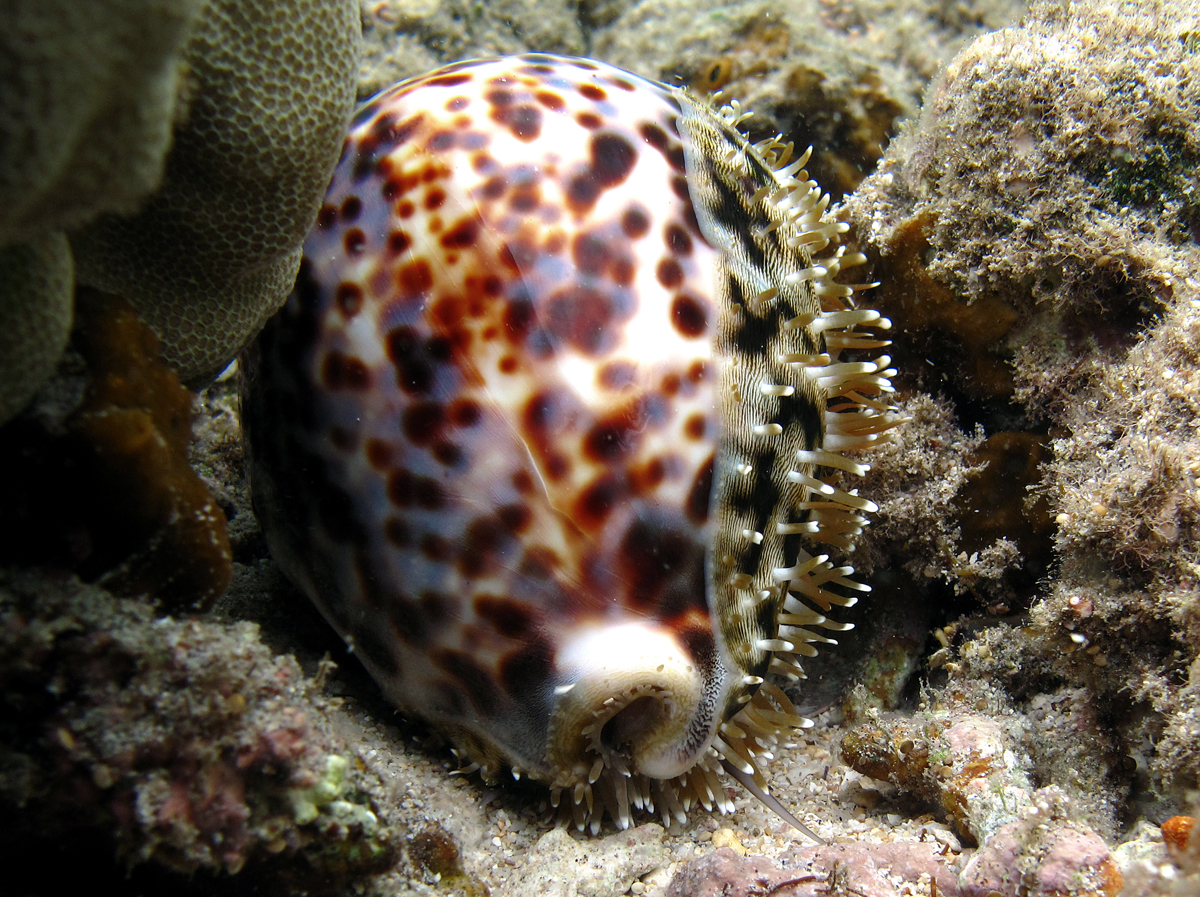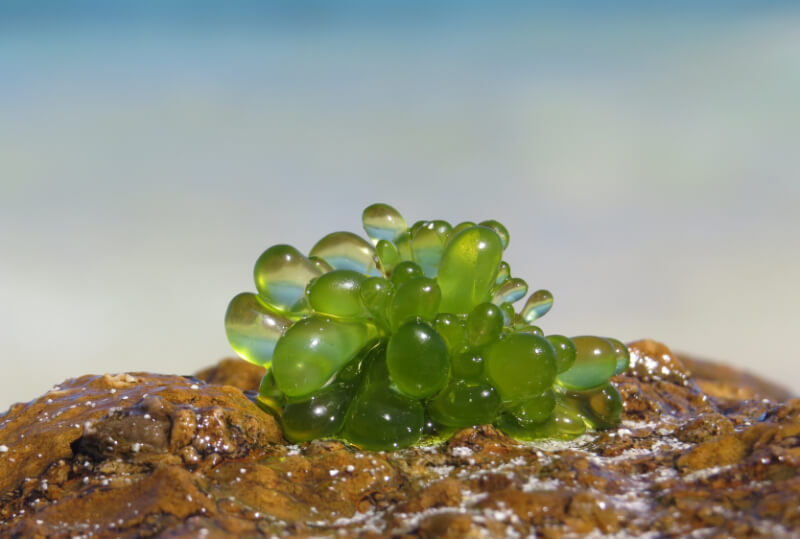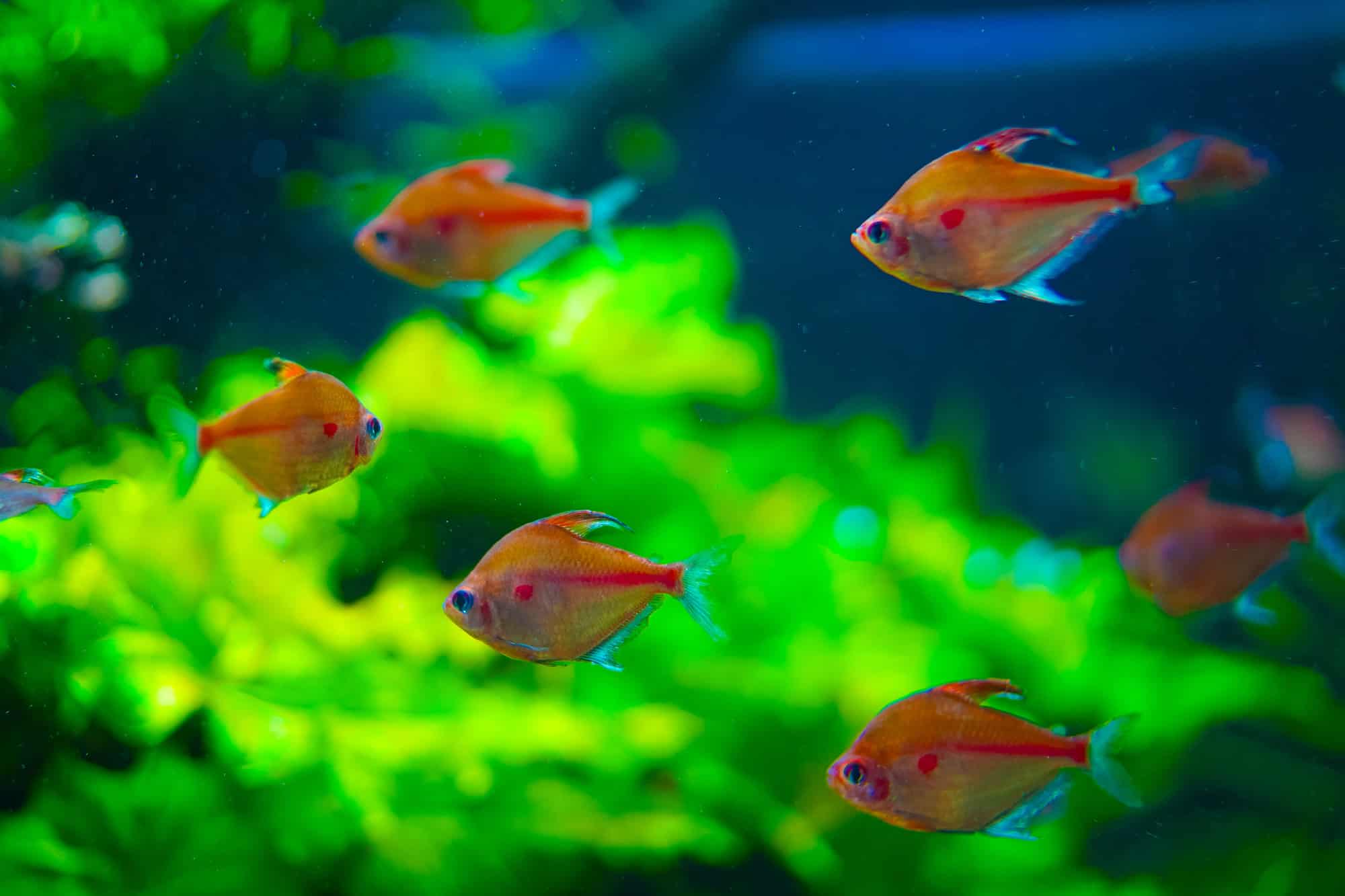What a better name for a good looking coral than Elegance Coral? If you are looking to improve the appearance of your tank this coral might be perfect for you.
There are a few things to watch out for since caring for an elegance coral is not a walk in the park. Fragging is one of things we wouldn’t recommend to do which we cover in more detail towards the end.
In this guide you’ll learn plenty of essential information from water parameters, setting up your tank to diseases and prevention. Enjoy!
Quick Facts 
| Scientific Name: | Catalaphyllia jardinei |
| Other Names: | Elegant coral, Ridge coral, and Wonder coral |
| Water Flow: | Moderate 20-40 times turnover |
| Compatibility: | Acan Coral, Basslets, Blennies, Favia Coral |
| Size & Growth: | 1-1/4inches per year and reach up to 12 inches by 8 inches in diameter |
| Care Level: | Moderate |
| Feeding: | Meaty foods like brine shrimp, Mysis shrimp, krill, copepods, and daphnia |
| Water Parameters: | 74-83F, 8.1-8.4pH, 8-12dKH, 1.023-1.025SG |
| Tank Size: | 30-90 gallons |
| Lighting: | 80 to 120 PAR |
| Propagation & Fragging: | Difficult and not recommended |
Species Summary
The Elegance Coral is a Large Polyp Stony (LPS). Its scientific name is Catalaphyllia jardinei, and its common names are Elegant coral, Ridge coral, and Wonder coral.
This coral is part of the Euphylliidae family and Catalaphyllia genus. It is closely linked to members of the Euphyllia species, including the Frogspawn and Torch corals.
The Elegance Coral can be found in waters 130 feet deep throughout the Pacific Ocean, expanding as far as Australia, Indonesia, Japan, Mozambique, Vanuatu, and Micronesia.
Appearance
The Elegance Coral comes in several color variations, such as green or brown with blue, purple, or orange tentacles.
Some corals are even found in fluorescent green with cream-colored tentacles, while others may feature bright pink tips.
Rare Elegance Coral
A rare variation of the Elegance Coral has been spotted at the Bali Aquarium in Indonesia. Originally found in Australia, this coral is solid red with green streaks that disappear in the blue-tipped tentacles.
Elegance Coral Care
With a moderate to difficult care level, the Elegance Coral is more suitable for intermediate and experienced hobbyists rather than beginners.
Tank Size
The recommended tank size for an Elegance Coral ranges from 30 to 90 gallons. You want to ensure your coral has plenty of room to grow.
Water Parameters
Elegance Corals can grow and thrive in captivity if you stay within the recommended water parameters.
- Water temperature: 74 – 83 degrees Fahrenheit (23 – 28 degrees Celsius)
- pH levels: 8.1 – 8.4
- Water hardness: 8 – 12 dKH
- Specific gravity: 1.023 – 1.025
- Calcium: 400 – 450 ppm
- Magnesium: 1200 – 1350
- Alkalinity: 8 – 11 dKh
- Strontium: 8 – 10
- Nitrate: 20 ppm or lower
- Phosphates: 0
Tank Setup
Elegance Corals prefer soft sandbeds and substrates because these elements mimic their natural habitat. It is important to avoid rock formations because the hard surfaces can damage the coral’s tissue.
Placement
The Elegance Coral does best at the bottom of the tank because of the amount of lighting and water flow it receives. Be careful not to place the coral under metal halides because it could lead to damage and rapid tissue necrosis (RTN).
Author Note: It should also be placed at least 6 inches away from other corals to prevent aggressive behavior.
Lighting
It is recommended to keep your Elegance Coral under moderate lighting of 80 to 120 PAR. One option is to play it safe with 100 PAR, which allows you to adjust the lighting within that range as needed.
Filtration / Water Flow
The water flow should be kept at a moderate level of 20 and 40 times turnover to encourage growth and survival. A low flow does not remove debris and reduces your coral’s nutrients.
Your coral may have difficulty extending and capturing food if the flow is too high. Intense waters can also cause damage to your coral’s tissue.
Acclimation
Lighting plays a big part in acclimating your coral to its new environment. Starting off with intense lighting may shock your coral, especially if it was transported in a dark container.
You want to start on the lower side of the recommended lighting range, adjusting the level based on your coral’s response. Another option is to reposition your coral in its tank to receive the proper lighting as needed.
Size and Growth Rate
A healthy Elegance Coral might take a lot of space from your tank since it can grow up to 12 inches by 8 inches in diameter, with tentacles extending 4 inches to 6 inches. As far as their growth rate this wouldn’t be of concern because they grow about 1-1/14 inches per year.
Feeding
The Elegance Coral relies on photosynthesis for nutrients and has a close relationship with zooxanthellae. If you want to help out to make sure your coral is properly fed, try target feedings twice a week.
Elegance Corals enjoy soft, meaty foods, including brine shrimp, Mysis shrimp, krill, copepods, and daphnia. You can also feed your coral small pieces of fish, shellfish, and reef roids. It is important to chop the food into smaller portions because your coral may not digest bigger pieces well.
During feedings, you can watch your coral extend its tentacles to capture its food.

Common Diseases and Prevention
There are five common diseases that can affect the Elegance Coral if proper precautions are not taken.
- Elegance Coral Syndrome (ECS)
Elegance Coral Syndrome mostly affects the corals from Indonesia, and there is no known cure for this disease. The symptoms include retracted tentacles and swelling on the oral disc or a layer of white mucus.
The best way to prevent this disease is to ask where your corals are coming from before purchasing them.
- Coral Bleaching
Coral bleaching is caused by poor conditions such as intense lighting and parameter changes.
The symptoms include your coral losing its color and turning white. It can be fixed by determining the cause and making the appropriate adjustments.
- Gall Crabs
Your Elegance Coral may not like being used as a hiding spot for gall crabs. The best way to tackle the problem is to remove the crabs and any eggs manually. Some hobbyists use tweezers or squeeze them out with a pin.
- Brown Jelly Disease
If you notice a lot of brown jelly on your coral, it may be suffering from Brown Jelly Disease. The culprit is usually tissue damage or poor water conditions.
The first thing you want to do is place your coral in a separate container to prevent the disease from spreading. Carefully remove the brown jelly from your coral, and use an antibiotic on the infected areas. Your coral must remain in a separate tank until it makes a full recovery.
You can prevent this disease by keeping your corals away from potential hazards and maintaining accurate parameters.
- Elegance Abandoning Base
This is also known as bailing out, which happens when an Elegance Coral’s old skeleton is removed. While not confirmed, the reason could be intense water flow or lack of nutrition.
Bailing out can happen once every few months and should be watched carefully. Your coral is usually fine as long as the tissue does not recede.
Compatibility
The Elegance Coral is known to be aggressive and sting neighboring corals. With enough space for each species to live comfortably, you can create a peaceful environment in your aquarium. The key is to choose your coral’s tank mates wisely.
Start by researching the corals and reef-safe fish that are compatible with the Elegance Coral.
You also want to avoid the species that are at risk of becoming your coral’s next meal.
The results of adding clownfish to the same tank have been mixed. If you insist on adding this fish, you may want to start with just one clownfish to see how your coral reacts to it.
Propagation and Fragging
Many hobbyists avoid fragging because it could lead to damage to the coral. The tissue is located deep inside the skeleton, and this increases the risk of losing one or both halves during the process.
If you still want to frag your Elegance Coral, it is recommended to attempt the process on an Australian Elegance Coral with a similar structure to the Wall Euphyllia.
- The first step is to gather the necessary supplies, which are gloves, an electric bandsaw, safety goggles, a water container, and an iodine solution. You can also use a reef dip that contains iodine.
- You should never touch the coral with your bare hands. This could lead to the removal of its outer layer and bacteria growth. It is essential to wash your hands and wear gloves.
- Choose a healthy, decent-sized coral with multiple mouths.
- Once the coral’s tentacles are retracted, use the electric bandsaw to carefully cut the coral into several pieces. You should limit the process to a single frag, and it must have at least one mouth.
- Dip your coral in the reef dip or iodine solution to heal any injuries.
Please be aware that most Elegance Corals do not survive the fragging process. If you are worried about this and need more detailed instructions, check our Coral Fragging Guide.
Author Note: Patience is the best way to propagate Elegance Corals without risking an injury or death. If you ensure your corals receive the proper care and live in the right conditions, they can grow to a decent size and form buds. You can remove and harvest the buds once they are bigger.
While Elegance Corals grow slowly, waiting several years for buds to form is better than accidentally harming your coral.
In Conclusion
We hope you enjoyed reading this guide as much as we enjoyed writing it. Elegance Corals could be a great addition to your tank as long they are properly cared for since they are a bit picky.
One of the things we like about this coral is its long tubular tentacles with contrasting ticky stips used to catch prey. This also works to keep other fish at a distance.
Feel free to check our other Coral Care Guides and if you will show off your coral in social media, please tag us on Facebook.
If you have any suggestions on how we can improve this guide we would love to hear from you. Just visit our contact page and reach out to us!




